Ziegfeld Follies (1945)
“Just because I moved up here, did the Follies have to die, too?”
|
Synopsis: |
|
Genres, Themes, Actors, and Directors:
Review: Thankfully, while several of the vignettes are somewhat snooze-worthy (viz. Kathryn Grayson’s tiresome finale song, “Beauty”), none are outright clunkers — and, as DVD Savant states, “The show [does have] plenty of good material”, with “at least a third of [the film] terrific, keeper material.” A personal favorite remains Judy Garland’s “A Great Lady Has an Interview”, wherein Garland is given a rare opportunity to mug mercilessly in front of the camera, and does a smash-up job impersonating — well, Greer Garson (who was originally slated to star in the role herself, but apparently wasn’t quite up for such rampant self-skewering). Perhaps the most noteworthy performances, however, are given by Fred Astaire and Lucille Bremer (best known for playing “the oldest sister” in Meet Me in St. Louis) in their two numbers together: the sleek “This Heart of Mine”, in which Astaire plays a gentleman thief, “Raffles”, intent on stealing jewels from Bremer’s society dame, and in the show-stopping “Limehouse Blues”, which remains the most visually stunning of all the vignettes (see stills below). Also of enormous interest is the opportunity to see Gene Kelly and Fred Astaire in their one and only dance performance together on-screen. Their vignette — entitled “The Babbitt and the Bromide” — is humorously conceived and executed, though sadly doesn’t really offer either one an opportunity to show off his uniquely gifted dancing chops. As indicated in my assessment of the Fanny Brice vignette, none of the comedic (non-musical) sketches in Ziegfeld Follies are really all that funny — but they do remain an interesting historical glimpse at what was once considered funny in the original Follies (Brice, after all, was a regular performer on the show). Red Skelton’s increasingly drunken turn in “When Television Comes” is about as dated as you could imagine, as is the central conceit in Keenan Wynn’s “Number Please”; and while Victor Moore and Edward Arnold do a fine job in “Pay the Two Dollars” (nicely portrayed as a Kafka-esque mini-nightmare), the sketch simply goes on too long. On a more positive note, the opening puppet show remains quite clever and unique; see still below. A final comment: if you blink for an extended period of time, you may miss Lucille Ball in her moment of glory early on, wielding a whip which she cracks at a bevy of black-clad “cat women”; it’s a strange visual, and doesn’t really pay off the way it could or should, but is mildly amusing. Redeeming Qualities and Moments:
Must See? Categories
Links: |
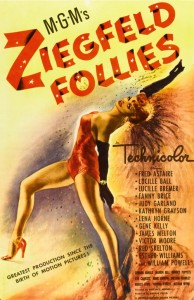
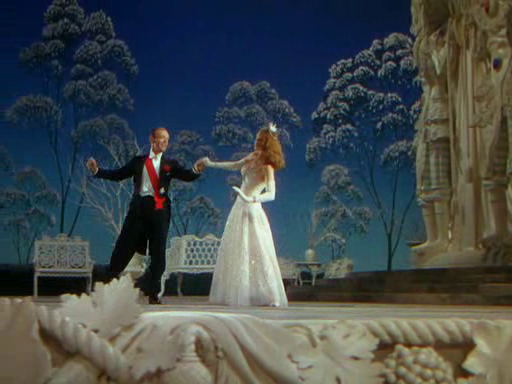
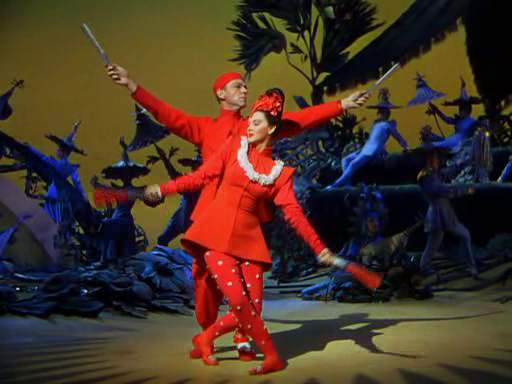
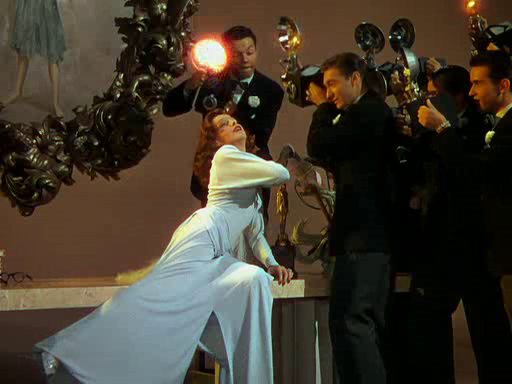
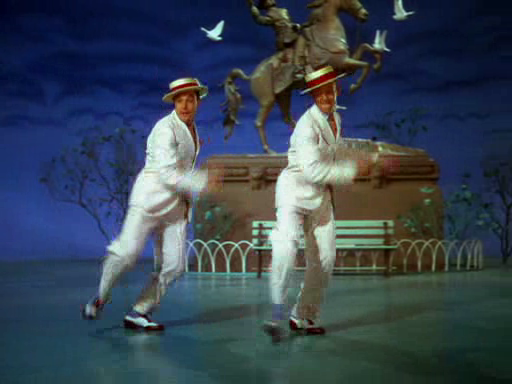

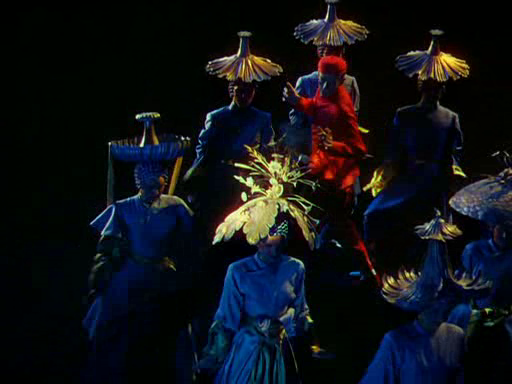
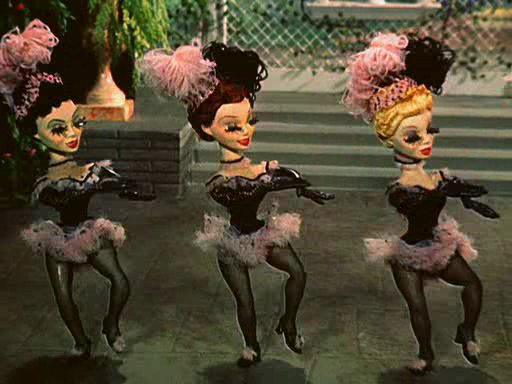
One thought on “Ziegfeld Follies (1945)”
A once-must, mainly for the reasons stated.
When considering something as a must-see, a showcase of scenes and songs like this will obviously be a particular problem. ‘ZF’ isn’t a piece with ‘something for everyone’ (although its aim is along those lines). As the assessment puts it, a good deal of what’s in it (roughly half) simply hasn’t held up (if it ever did).
I’m much less bothered by the ‘Sweepstakes Ticket’ and ‘Pay The Two Dollars’ bits. I find the over-the-top aspect of the former suitable (it’s also of particular interest to compare with Streisand’s portrait of Brice in ‘Funny Girl’) and I don’t think the latter goes on too long; it’s fun watching Moore and Arnold escalate. On the other hand, yes – generally the rest of the comic material falls very flat…and some of the songs throughout are ill-chosen. Grayson is saddled with something sappy – although her sequence, in part, is intriguingly inspired by Salvador Dali, and poor Lena Horne tries her best to sell ‘Love’, a song all but impossible to sell.
[I would suggest that one movie that features Williams front-and-center should probably be considered a ‘missing title’; she’s too unique in cinema history to not include as a star.]
The musical numbers praised in the assessment are indeed standouts. (As with ‘Easter Parade’ a few years later, Robert Alton’s overall choreography is dazzling; although he’s only one of a few at work in this department, his style is noticeable.) It probably would be nice to see Kelly and Astaire supplied with something better than a disappointing Gershwin tune – but they’re still fun to see together. As well, Astaire and Bremer are a fine pair (esp. in ‘This Heart of Mine’, even if its final moment doesn’t ring true; this sequence benefits greatly from the use of rotating floors and, esp., opposing treadmills – very clever indeed). Virginia O’Brien is also charming when the opening pastiche number, ‘Here’s To The Girls’ (with a yummy Cyd Charisse solo) segues to ‘Bring On the Wonderful Men’.
[I didn’t blink and did see Ball. She seems a touch uncomfortable during her initial entrance, standing on a horse! – and it can’t have been easy to be a Ziegfeld girl and laden with so much…stuff! But when she starts cracking the whip for the panther women, we do get an eye-opening vision of s&m lite!]
I must say that Garland outdoes herself here with a marvelously acted performance. She really has this type of film star down and gets plenty of mileage with nuance. The Kay Thompson-Roger Edens piece itself is hilarious, and Garland appears to be having a smashing time. I’d recommend seeing the film for this sequence alone!